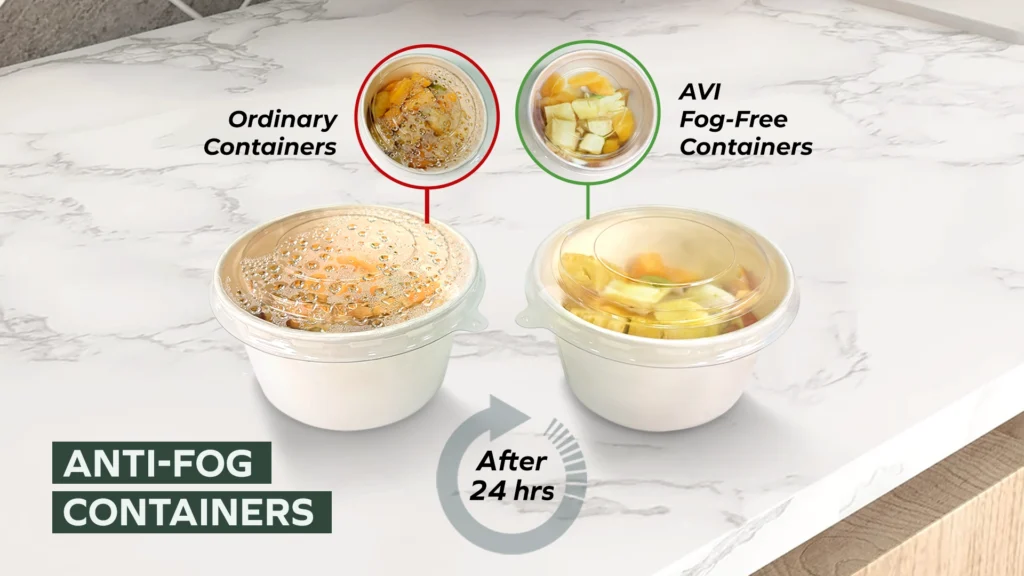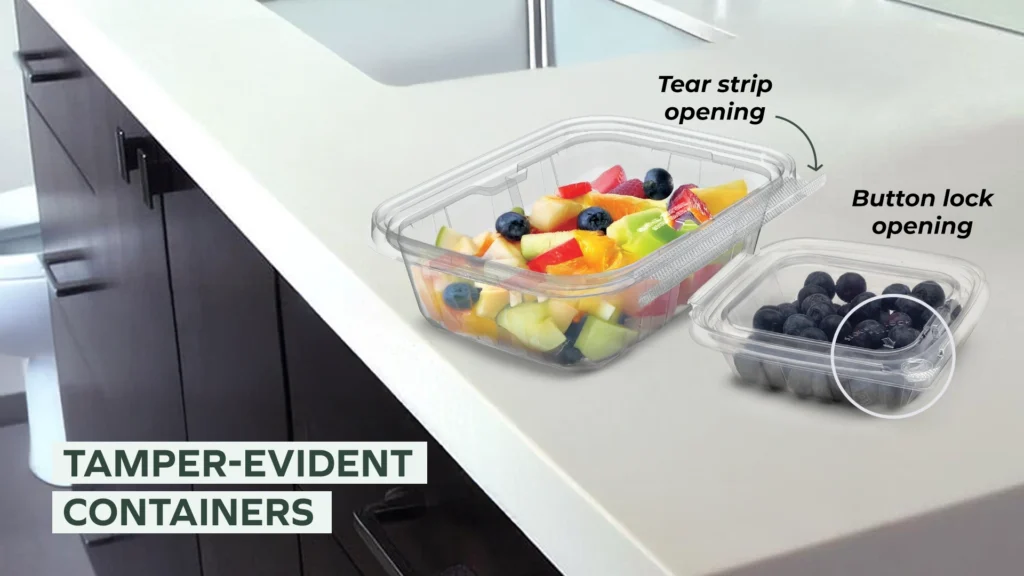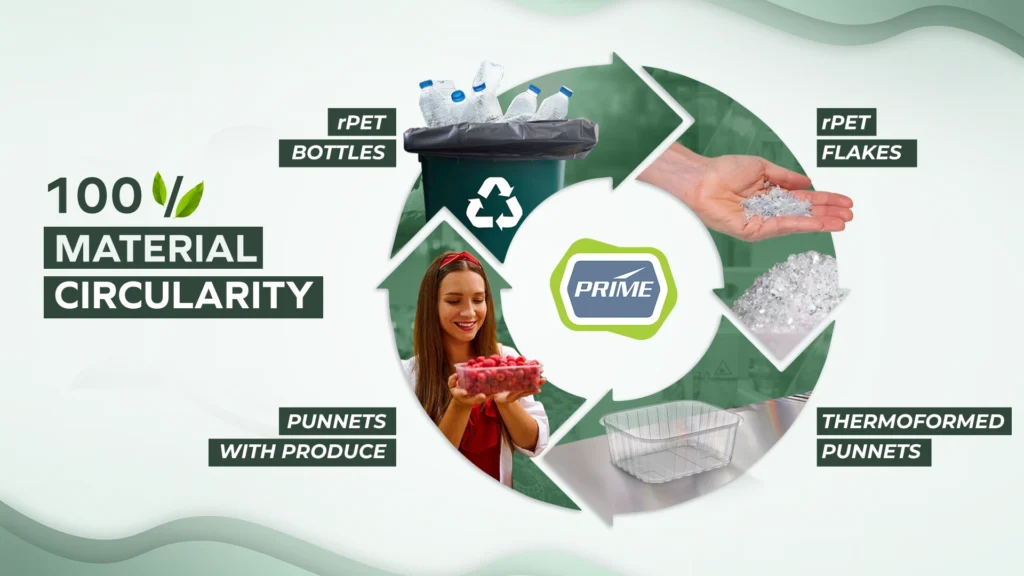
The world’s craving convenience, and e-commerce is delivering—literally. The e-commerce food delivery boom is real—Zomato’s orders spiked 53% to Rs 15,455 crore in Q1 FY25, while Swiggy’s Instamart grew 101% to Rs 4,670 crore in Q4 FY25 (Business Standard, 2025; Goodreturns, 2025). Globally, this market is racing toward USD 477.64 billion by 2027 (Statista, 2025). Behind every fresh bite? PET containers—those clear, sturdy heroes keeping consumer goods like fresh produce, deli foods, and meal kits safe, fresh, and green. “It’s about balancing freshness with sustainability,” says Sukhdeep Sethi, Managing Director at AVI Global Plast. Let’s unpack why PET is powering this food revolution.

The PET Advantage in E-commerce
PET containers, made from Polyethylene Terephthalate, are lightweight, durable, and crystal-clear—perfect for showcasing vibrant salads or neatly packed deli sandwiches. Their recycled counterpart, rPET containers, crafted from post-consumer bottles, is stealing the spotlight. The global rPET market hit USD 12.1 billion in 2024 and is growing at 8.1% annually (Persistence Market Research, 2024). Why? Consumers are eco-conscious—74% prioritize sustainable packaging when choosing brands (NielsenIQ, 2024).
Fresh produce, like leafy greens and berries, drives demand, with the global salad market valued at USD 12.03 billion (Grand View Research, 2022). Deli foods—cold cut meats, sliced cheeses, sandwiches, and salads from delicatessens—are surging, with the market expected to reach USD 298.3 billion by 2027 (Statista, 2025). Retail-ready meal kits, a fast-growing segment of prepared meals, rely on PET for convenience and appeal. “Our trays balance visibility with protection,” Sethi says. For online food delivery, where food faces bumpy delivery rides, PET containers keep consumer goods fresh and intact.
Regulations Are Raising the Bar
Governments worldwide are tightening the screws on packaging. India’s Plastic Waste Management Rules mandate 30% recycled plastic in rigid packaging by April 2025, scaling to 60% by 2028 (Cirplus, 2025). The EU’s Single-Use Plastics Directive requires 25% rPET in bottles and trays by 2025, increasing to 30% by 2030 (Sustainable Plastics, 2025). In the US, Extended Producer Responsibility laws nudge brands toward rPET to avoid hefty fines. These rules are reshaping the consumer goods industry.
In March 2025, India’s Food Safety and Standards Authority (FSSAI) approved recycled PET for food contact, provided it meets stringent safety standards. “These changes are technical innovation and thorough packaging compliance,” Sethi says.

How PET Containers Solve Real Problems
Online food delivery is a logistical puzzle, with unique pain points for each category. PET containers step up with clever, practical solutions to keep consumer goods fresh, safe, and green. Here’s how they tackle the toughest challenges:
- Fresh Produce:
- Pre-cut salads or fruits stay fresh with Modified Atmosphere Packaging (MAP) in PET trays. MAP tweaks gas levels to slow spoilage, giving your greens up to 5 extra days of life.
- Berries and grapes need air to avoid turning mushy. PET punnet containers with ventilation holes ensure breathability, keeping moisture at bay and fruits bright and tasty.
- Misting-prone produce, like leafy greens, tomatoes, or cucumbers, can fog up and lose appeal. Anti-fog coatings on PET containers keep things clear and crisp, so your veggies look as good as they taste.

- Deli Foods:
Cold foods like hummus and deli salads are prone to leaks or contamination. Tamper-evident PET containers with airtight seals keep everything secure and fresh, whether it’s heading to your doorstep or sitting in a deli case. They’re built for shoppers who want grab-and-go quality. - Retail-Ready Meal Kits:
Meal kits with proteins, greens, or sauces can’t afford to mix or spill. PET compartment trays lock each ingredient in place, so your kit arrives ready to cook, no mess, no stress. It’s dinner made simple.
“Packaging’s got to work as hard as the delivery rider,” says Sukhdeep Sethi, Managing Director at AVI Global Plast. PET containers cut spoilage for growers, reduce returns for retailers, and deliver fresher, greener meals to you.

AVI’s Commitment to a Greener Future
At AVI Global Plast, sustainability is our core. Our Daman plant produces 24,000 tonnes of rPET yearly, crafted from recycled, cleaned PCR (Post-Consumer Recycled) and PIR (Post-Industrial Recycled) flakes sourced from trusted suppliers. This process supports a circular economy, keeping plastic out of landfills and oceans.
The Road Ahead for E-commerce Packaging
rPET’s rewriting the rules of e-commerce—sustainable, safe, and ready for shoppers craving fresh, green meals. As regulations tighten and online orders soar, AVI’s keeping brands fresh and future-ready. Curious to know how we do it? Reach out at info@avigloplast.com or call +91 022-68559300.
FAQ: rPET Packaging
- What are PET containers? Clear, durable plastic containers, often recycled into rPET for eco-friendly packaging.
- Why use PET for food delivery? They’re tamper-proof, leak-proof, and sustainable, perfect for bumpy rides.
- Are they certified? Yes, with standards like ISO 22000, BRCGS, and EN 15343 for safety and sustainability.
- How do they help retailers? They reduce waste, extend shelf life, and attract eco-conscious shoppers.

Wonderful work! This is the type of info that should be shared around the net. Shame on the search engines for not positioning this post higher! Come on over and visit my website . Thanks =)
This actually answered my problem, thanks!